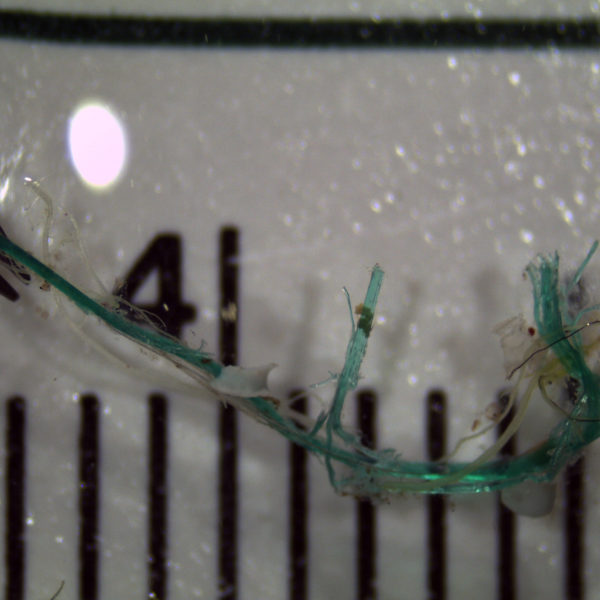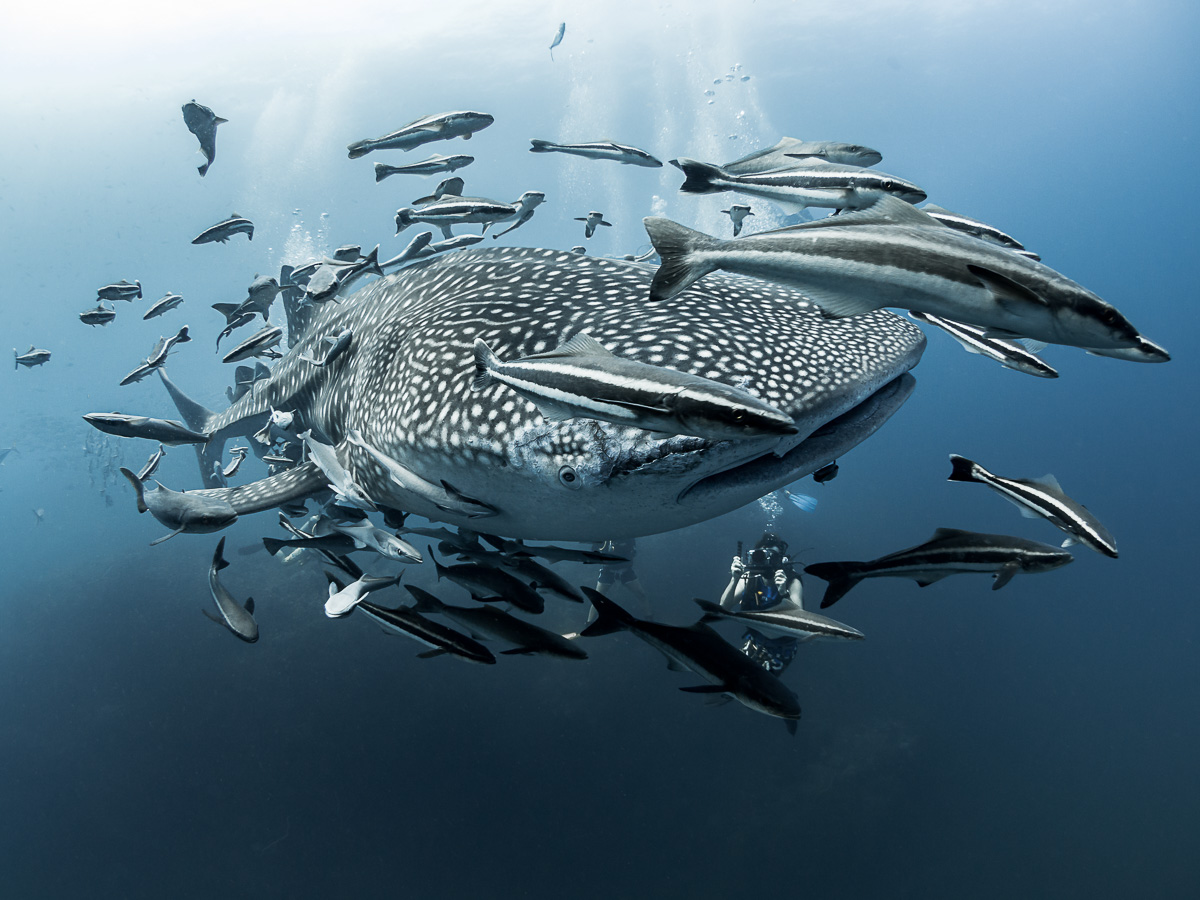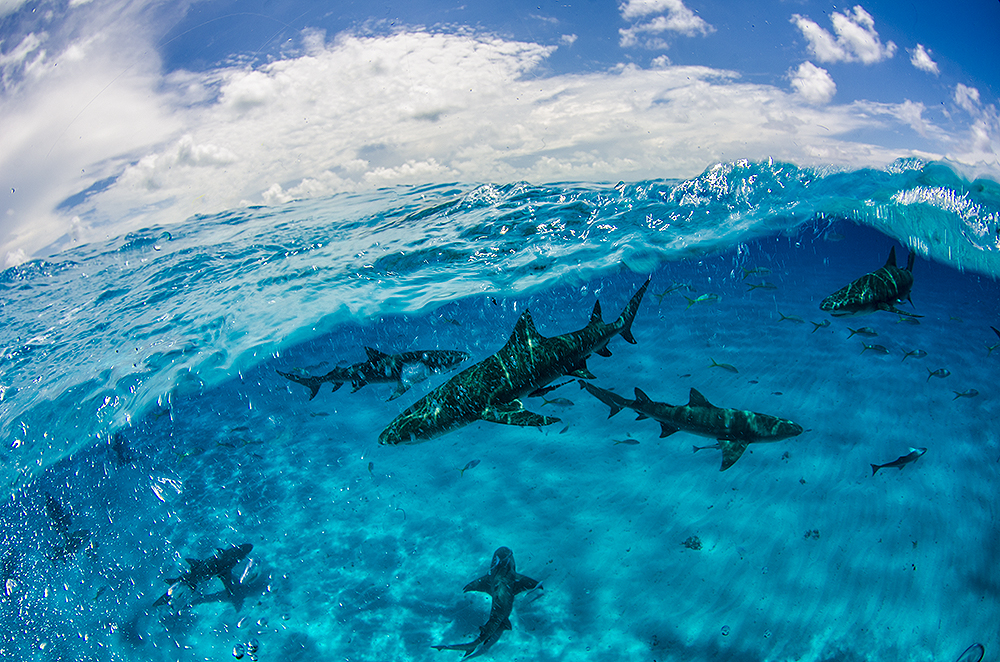The Plastic Predator
Published by Ocean Conservancy
It’s no doubt that sharks seem to have proven themselves one of the most iconic ocean species over the years. Perhaps it’s the mysterious fin that breaks the surface briefly that draws in our swift and immediate attention; maybe it’s the prowess and power and captivating tenacity of these creatures that draws an unquenchable thirst for knowledge about them. Regardless of what exactly it is that makes us so enraptured with these storied animals, one thing is for certain:
Sharks. Are. Jaw-esome.
So much so, in fact, that I honestly couldn’t imagine a world without them. Sadly, close to half of all shark species assessed on the IUCN Red List (the go-to database of species conservation statuses) are currently listed as endangered, critically endangered, vulnerable or near threatened. What makes this even sadder: many of the threats that pose the greatest threats to sharks are directly induced or worsened by human activities and indiscretion.
One of the most damaging of these problems continues to be marine debris and pollution. You may not be at all surprised by this, as our impact on ecosystems of all kinds through waste has been increasingly detrimental over the past hundred years or so. From cigarette butts to food wrappers to plastic bottles and straws, the amount of trash that finds its way into marine ecosystems is now beyond what most people can fathom. During the 2017 International Coastal Cleanup alone, a total weight of trash equal to 812 cruise ship anchors was collected…and that’s only in the areas where cleanups were held, and only including the garbage that was able to be collected over the course of a single event!
The amount of our waste that has actually made it into our ocean?
It’s now estimated to be upwards of 8 million metric tons per year.
And the consequences are devastating.
But let’s take a step back for a moment. We know pollution effects all marine species, but how exactly does it pose a threat to sharks? There’s a myriad of angles that one could take to answer this question, as there are countless ways a piece of trash could directly harm a single shark. From entanglement in fishing gear to the accidental consumption of plastics, the number of ways by which a shark could be hurt by pollution are virtually limitless. But there’s one specific way these sharks are feeling the hurt from global waste that may prove one of the most disturbing.


I’d guess that you’re likely well aware that sharks are at the top of our ocean’s food chain. As apex predators, their primary food source is dependent on prey that consume other species at a lower trophic level. Compared to other ocean species, this makes sharks significantly more prone to bioaccumulation. So, if a fish towards the bottom of the food chain is exposed to toxins or consumes pollution—including microscopic plastic pieces—there’s a significant chance that a shark consuming it will absorb those contaminants through ingestion.
As this aggregation of pollution continues, however, items made of plastic don’t remain the same shape or size. Through processes like wave action and UV breakdown (among others), the pollutants break down into what’s called microplastics. These bits of debris eventually break down to an infinitely tiny size that’s virtually invisible to the human eye, but they never truly biodegrade. The pieces don’t just have to be ingested to cause a problem, either; they may be inhaled through the gills or become lodged or entangled around extremities, causing irreparable damage to vital bodily systems over time. Typically, smaller species will consume these little pieces of plastic, and sharks end up acquiring all of it as they consume their prey.
And that’s not even the scariest part.
Pollution doesn’t discriminate when it comes to the specific animals it affects. It does not see nor care if an animal is a member of an endangered species, and it doesn’t change its course based on the levels to which a habitat is suffering from destruction. Many shark populations are already declining due to anthropogenic factors such as illegal harvesting and bycatch through irresponsible or unsustainable fishing practices across the globe, and all the while, the effects of climate change and ocean acidification are altering the health and livability of their homes.


From whale sharks to great whites, sharks help keep our ocean’s ecosystems thriving by keeping the populations of certain species at healthy levels. At the end of the day, every species matters. If we didn’t have sharks, our ocean would both suffer immensely and look vastly different. “But we’ll never have a world without sharks,” you may say. Well, if we’re not careful, that slight possibility might turn to a clear reality.
But here’s the glimmer of hope: if we can play a part in their struggles, we can change the narrative and play an even greater part in their restoration.
This Shark Week, let’s commit to doing all we can to protect sharks across the globe. Let’s educate each other, showing our communities the crucial role sharks play in global ecosystems. Let’s play our part and fight to keep our own levels of plastic waste down, and let’s make taking care of our ocean and cleaning up shorelines a part of our daily lives. It’s true: sharks are depending on us, and that’s not an exaggeration. Without our purposeful, actionable commitment to changing the outlook on so many of these iconic species’ future, a world without sharks may be the world that becomes our descendants’ reality.
I don’t know about you, but I want a world with a healthy, beautiful, thriving ocean, full of healthy and thriving sharks. With small changes to turn the tide for sharks now, and we can make sure Shark Week stays a jaw-somely positive thing for years to come.


Sign up for our emails!
The post The Plastic Predator appeared first on Ocean Conservancy.
Read the full article at: https://oceanconservancy.org/blog/2018/07/23/the-plastic-predator/


